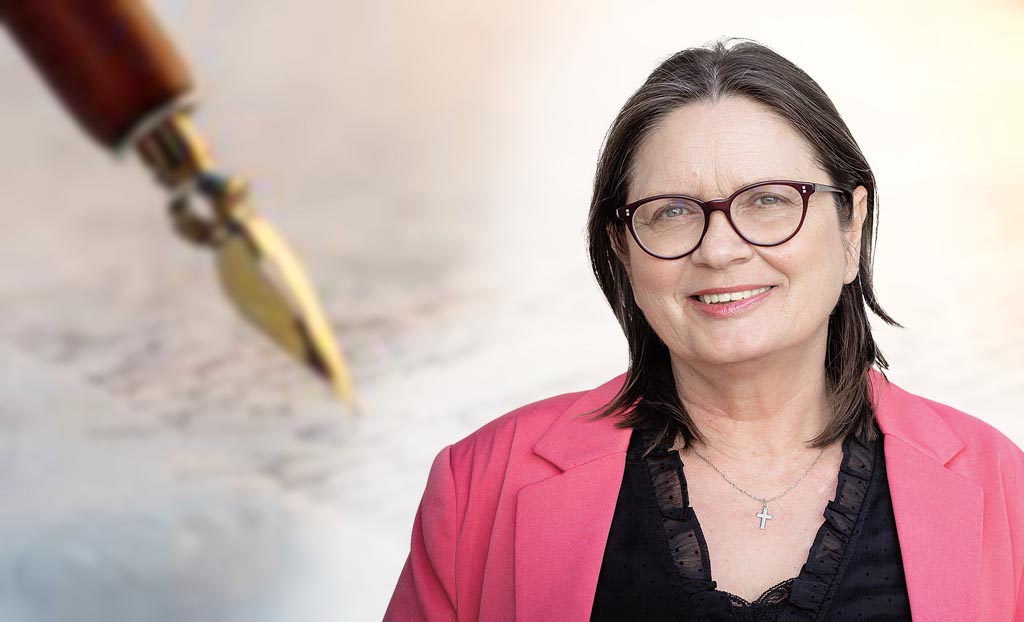By: Dr. Andreja Valič Zver
Let me begin today’s column with a thought I have highlighted many times before: “Realpolitik is back!” The power play between global superpowers and muscle-flexing has returned. In truth, despite all the public declarations, the stack of signed treaties and other documents, and the hugging of political showmen, it never really left the stage. Anyone who naively believes that political statements like “we stand for peace and oppose militarization” are truly about peace – well, there is no helping them. Sooner or later, ruthless history will begin its macabre dance.
Realpolitik has also revealed itself in recent days through the case of Greenland. The average Slovenian knows little to nothing about this vast island, covered in ice and snow. Perhaps the person who could tell us the most about life on Greenland is Tomaž Majcen, a Franciscan friar from Ptuj, who has been diligently tending to his flock in this remote part of the world for several years, delighting his social media followers with stunning images of the aurora borealis and other features typical of the northern hemisphere. In the Slovenian consciousness, perceptions of the North have, since the late 19th century, been mostly associated with fearless explorers. The first to report on them was Anton Aškerc, who in 1897 published news about Nansen’s expedition to the North Pole in the Ljubljanski zvon. The Norwegian hero Fridtjof Nansen also succeeded, in 1888, in crossing Greenland’s icy expanse with five companions in just six weeks.
Fewer than 60,000 people live on Greenland, mostly along the island’s western coast. Most of the population consists of Inuit – previously referred to, less politically correctly, as Eskimos. The island is believed to have been inhabited as early as the 3rd millennium BC. In the 10th century, Scandinavian Vikings sailed from Iceland to Greenland (the “Green Island”). Along with Norway, Greenland became part of the Danish kingdom in the 14th century. After the Napoleonic Wars, Denmark retained Greenland through the Treaty of Kiel in 1814. Following decades of colonial exploitation and rather brutal treatment of the majority Inuit population (for example, Danish authorities forcibly sterilised young men and imposed contraception on women), Greenland was granted autonomy. Interestingly, it has not been part of the EU since the mid-1980s. Still, Greenland remains at the top of the world’s grim statistics for suicides. Most victims are young men, driven not only by a lack of prospects but also by Greenland’s harsh natural conditions, with long, depressing days devoid of sunlight and daylight.
Yet the island possesses an abundance of natural resources that are essential for manufacturing many goods, including smartphones and aircraft components. And therein lies one of the main reasons for the superpowers’ growing interest in Greenland. Over the past five years, China has earned around five billion dollars through mineral and rare earth mining on the island. China’s soft power is especially evident in the acquisition of stakes in companies that extract Greenland’s natural wealth. Russia, meanwhile, is conquering these icy expanses in a different way. Melting ice in the North is enabling the creation of new trade routes across the Arctic. The increasingly visible and aggressive Chinese and Russian influence in the North had already alarmed Trump during his first term. He began his second term with a stormy declaration calling for much deeper involvement of Canada, Greenland, the Panama Canal, and other parts of the world in America’s geopolitical, economic, and military vision for the post-2025 era.
The visit of Vice President J.D. Vance and his wife to the U.S. military base in Greenland did not help calm the situation. The political tsunami stirred up by Trump’s statements has by no means subsided. The Danish Prime Minister reacted sharply, while the Foreign Minister took a more measured approach, announcing talks with the U.S. And we would not be surprised if, despite the initially heated rhetoric, the U.S. and Danish governments began discussions not only about expanding American influence in Greenland but also about purchasing the island. After all, the idea has been on the table several times – ever since the purchase of Alaska in the 19th century. So, let’s face the truth and admit that the political reality unfolding in the U.S. – Russia – China triangle is often more nightmarish than our worst dreams.

